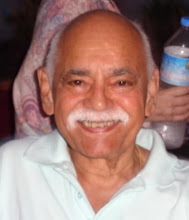Three recently published articles should
interest charities specially those who depend on legacies for survival.
The first was an article in the London
Standard of Tuesday June 10 and concerned Britain’s millionaires. According to
Lucy Tobin, there are 513,000 households in the UK which have been identified
as worth one million dollars or more. Of these 1044 are very wealthy with
assets of over 100 million dollars.
In the same issue in another article, Lucy
Tobin discussed the benefits of leaving money to Charities in your will.
Apparently there is a significant tax advantage, in a reduction of inheritance
tax, if you bequeath 10% or more of your assets to Charities. Money left to
Charities is of course tax exempt but the tax paid after this and tax-free
allowance by beneficiaries also drops from 40% to 36%.
An example highlights this advantage.
Assume you have assets of £1,325,000 in
your estate when you die. Excluding The IHT allowance of £325,000, there is
£1,000,000 for which tax is due.
If no money is left to a Charity,
inheritance tax of £400,000 will have to be paid leaving £600,000 for the
beneficiaries. Plus of course the tax-free allowance of £325,000.
If however 10% of the estate is provided
for Charities, then in addition to them benefiting by £132,500, inheritance tax
at 36% will be paid on £867,500, totaling £ 312,300, leaving £555,200 to the
beneficiaries. Plus the tax-free allowance of £325,000.
In other words your generosity of awarding
£132,500 to good causes is only costing your other heirs £44,800.
This surely is an opportunity that should
be promoted by Charities?
Andrew Papworth publishes Harvest, a
monthly newsletter and in the June issue writes about baby boomers. He states
that the time to approach them about possible bequests is now, since they will
begin the journey to the “unknown land” soon. People born between 1946 and 1966
will die between 2017 and 2046. Their wills probably drawn up between 1997 and 2026.
Only 37% of all adults have made a will and
the numbers rise slowly as we get older. 36% of adults currently between the
ages of 45 to 54 have, 58% of adults aged between 55 and 64 years have also
made a will and the proportion rises to 79% for those over the age of 65.
And Andrew says: time is running out if you
plan to approach the baby boomers for legacies.


